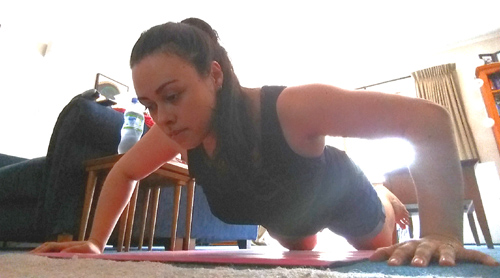 The craze that is CrossFit and the current trend of HIIT (High Intensity Impact Training) have been getting a lot of attention in recent years for making you fit and strong while burning calories quickly. For people ditching the gym, the online workouts by internet celebs such as Kayla Itsines and Ashy Bines have also been under the spotlight.
The craze that is CrossFit and the current trend of HIIT (High Intensity Impact Training) have been getting a lot of attention in recent years for making you fit and strong while burning calories quickly. For people ditching the gym, the online workouts by internet celebs such as Kayla Itsines and Ashy Bines have also been under the spotlight.
All these workouts can undoubtedly get you amazing results, but they can be risky business.
Is it worth the risk of injury?
The pursuit of getting fit and losing weight is one that many of us strive for, but are you willing to exchange your future health to achieve it?
Stuff reported ACC stats showing national gym and fitness related-injuries to have more than doubled in the last five years with 38,734 claims received in 2014 and ACC paying out $20,364,602 to cover them.
Ask any physio, osteopath or chiropractor and they will likely say that business has grown for them since CrossFit, high impact, bootcamp and home-based trainings have taken off.
Plyometrics (jumping) exercises such as squat jumps and burpees can put a lot of strain on joints and muscles, as can explosive heavy weight training. Performing an exercise – such as a push up – incorrectly and repeatedly over time can also lead to injury.
Doing strenuous workouts when your body is undertrained to handle them can cause issues, and this includes getting back into exercise after pregnancy, returning to exercise after injury and starting training after a long period of inactivity.
Getting fit and losing weight the right way
Make sure your body is ready for the type of training you want to get involved in. If you’ve never exercised before or you haven’t trained for a while, start out with some low impact training, check with a trainer or fitness instructor that you have perfect technique and gradually build up your strength before hitting the extreme exercises or going solo with internet workouts at home.
Pay close attention to physical cues given by instructors, ensure you know how to activate your core muscles for every exercise and watch for body alignment when performing movements such as squats and lunges.
Remember that any programmes advocating intense workouts may be thrilling at the time and get you fast results, but could have a negative impact on your joints, muscles or ligaments in the long term.
What if I get injured?
Listen to your body; if you’re experiencing pain while training – especially in the joints or your lower back – check with a fitness professional that you’re performing your exercises correctly and if you’ve already developed an injury or persistent pain from your training, see a physio asap.
Getting an injury treated sooner rather than later could make all the difference between whether you spend six weeks rehabbing it, or whether it becomes an ongoing lifelong problem.
With that in mind, listen to your physio’s advice and follow it like gospel – rest completely, take things easy, do your rehab exercises and your injury will heal up faster leaving you fixed up to get back to your training sooner.
Image / NZ Real Health

